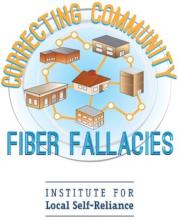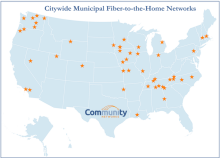UTOPIA Is Not An Unreachable Dream, It's A Network - Community Broadband Bits Podcast 331

When anti-muni groups have taken aim at publicly owned networks, they’ve often put UTOPIA in their crosshairs. The Utah Telecommunications Open Infrastructure Agency has had times of struggle, but those days seem to be over. The network is expanding, subscribers are touting the benefits that come with the choice of an open access network, and other communities are reaching out to UTOPIA for advice. Days in UTOPIA country are sunny.
In this interview, Christopher speaks with Kimberly McKinley, UTOPIA’s Chief Marketing Officer, about the new and improved UTOPIA. Kimberly describes some of the ways the agency has adjusted their thinking from public entity to public entity with a competitive edge. She notes that marketing isn’t something that organizations such as public utilities think they need to worry about, but in the world of connectivity, strong marketing strategy pays off.
Along with lessons learned, Kimberly shares the triumphs that have turned UTOPIA into the leader in the region. UTOPIA’s footprint is growing, their services are expanding, and they’re influencing more communities. They’ve worked hard to reach this level of success and we see their trajectory to continue upward.
Check out more coverage of UTOPIA on MuniNetworks.org.
This show is 18 minutes long and can be played on this page or via Apple Podcasts or the tool of your choice using this feed.
Transcript below.
We want your feedback and suggestions for the show-please e-mail us or leave a comment below.
Listen to other episodes here or view all episodes in our index. See other podcasts from the Institute for Local Self-Reliance here.
Thanks to Arne Huseby for the music. The song is Warm Duck Shuffle and is licensed under a Creative Commons Attribution (3.0) license.







